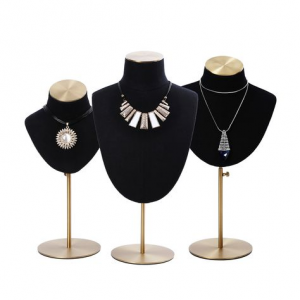LED canopy lighting has gained significant popularity in recent years when lighting outdoor spaces, especially in commercial and industrial settings. These energy-efficient and long-lasting lighting solutions enhance visibility and reduce energy costs.
If you're considering LED canopy lighting for your project, it's essential to understand the various cost factors associated with it. In this article, we'll explore everything you need to know about the cost of LED canopy lighting.
The Initial Investment
LED canopy lighting offers numerous benefits, but it's important to consider the initial investment required. The cost for LED canopy lights varies depending on factors such as the quality of the lights, brand reputation, and the specific requirements of your project. On average, the price of LED canopy lights can range from $100 to $500 per fixture. However, it's important to remember that LED lights have a longer lifespan than traditional lighting options, which can offset the higher initial cost over time.
In addition to the cost of LED canopy lights, you'll also need to consider the installation expenses. Hiring a professional electrician to install LED canopy lights ensures proper wiring and reduces the risk of safety hazards. The installation cost can vary depending on the project's complexity and the installation's location.
Installation costs can range from $200 to $500 per fixture. While the initial investment may seem higher than traditional lighting options, the long-term benefits and energy savings make LED canopy lighting cost-effective.
Energy Efficiency and Operational Savings
One of the main advantages of LED canopy lighting is its energy efficiency. LED lights consume significantly less energy than traditional lighting options, such as fluorescent or incandescent bulbs. LED canopy lights can provide the same brightness level while using up to 75% less energy. This energy efficiency translates to lower electricity bills, making LED canopy lighting a financially sound investment in the long run.
Furthermore, LED lights have a longer lifespan compared to traditional lighting options. LED canopy lights can last up to 50,000 hours or more, which means fewer replacements and reduced maintenance costs. Conventional lighting options, on the other hand, may need to be replaced every few thousand hours, resulting in additional expenses over time. By choosing LED canopy lighting, you save on energy costs and reduce the frequency of replacements, leading to significant operational savings.
Maintenance Costs
When considering the cost of LED canopy lighting, it's important to factor in the maintenance costs. LED lights require minimal maintenance compared to traditional lighting options. Standard bulbs often need frequent replacements, increasing labor and material costs. On the other hand, LED canopy lights have a longer lifespan, reducing the need for frequent replacements.
Regarding maintenance, LED lights are also more durable and resistant to external factors such as vibrations and temperature changes. This durability ensures a longer lifespan and fewer maintenance requirements. While occasional cleaning may be necessary to maintain optimal performance, LED canopy lights generally require minimal maintenance, resulting in further cost savings.
Incentives and Rebates
Many governments and utility companies offer incentives and rebates for LED canopy lighting installations to encourage the adoption of energy-efficient lighting solutions. These incentives can significantly reduce the upfront costs associated with LED lighting projects. Government programs and utility companies often offer cash rebates or subsidies, making it more affordable for businesses to invest in LED canopy lighting.
Before starting your LED canopy lighting project, it's worth researching your area's available incentives and rebates. Many utility companies have programs specifically designed to promote energy efficiency, and taking advantage of these opportunities can help offset the initial investment and provide additional cost savings.
Return On Investment (ROI)
Calculating the return on investment (ROI) is important when considering any investment, including LED canopy lighting. The ROI for LED canopy lighting is typically favorable due to the energy savings and reduced maintenance costs associated with LED lights.
To calculate the ROI, you'll need to consider the initial investment, energy savings, and operational savings over the LED lights' lifespan. By comparing the total cost of ownership of LED canopy lighting with traditional lighting options, you can determine the payback period and the overall financial benefits.
While the ROI may vary depending on factors such as energy prices and usage patterns, LED canopy lighting generally provides a positive ROI within a reasonable timeframe. LED lights' long lifespan and energy efficiency ensure that the initial investment is recouped through energy savings and reduced maintenance costs over time.
Conclusion
LED canopy lighting offers a cost-effective and sustainable solution for commercial and industrial outdoor spaces. While the initial investment for LED canopy lighting may be higher compared to traditional lighting options, the energy efficiency, operational savings, and long lifespan of LED lights make them a financially sound choice. By understanding the various cost factors associated with LED canopy lighting, you can make an informed decision for your project.
Considering the initial investment, energy efficiency, maintenance costs, incentives and rebates, and the return on investment, it's clear that LED canopy lighting provides significant cost savings in the long run. The combination of lower energy consumption, reduced maintenance requirements, and potential incentives make LED canopy lighting an attractive option for businesses looking to enhance visibility and reduce their environmental impact.






